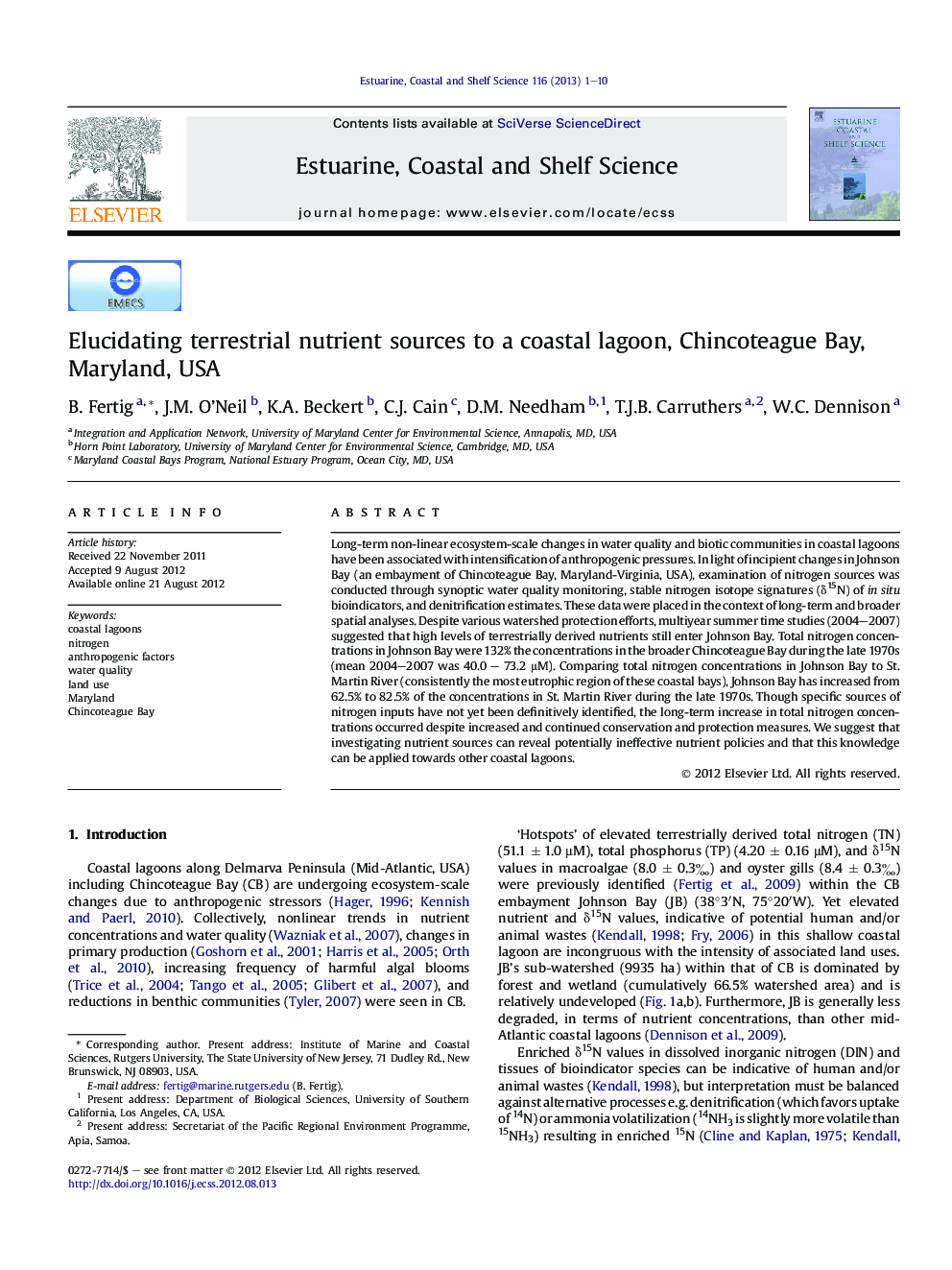| Article ID | Journal | Published Year | Pages | File Type |
|---|---|---|---|---|
| 6385120 | Estuarine, Coastal and Shelf Science | 2013 | 10 Pages |
Abstract
Long-term non-linear ecosystem-scale changes in water quality and biotic communities in coastal lagoons have been associated with intensification of anthropogenic pressures. In light of incipient changes in Johnson Bay (an embayment of Chincoteague Bay, Maryland-Virginia, USA), examination of nitrogen sources was conducted through synoptic water quality monitoring, stable nitrogen isotope signatures (δ15N) of in situ bioindicators, and denitrification estimates. These data were placed in the context of long-term and broader spatial analyses. Despite various watershed protection efforts, multiyear summer time studies (2004-2007) suggested that high levels of terrestrially derived nutrients still enter Johnson Bay. Total nitrogen concentrations in Johnson Bay were 132% the concentrations in the broader Chincoteague Bay during the late 1970s (mean 2004-2007 was 40.0 - 73.2 μM). Comparing total nitrogen concentrations in Johnson Bay to St. Martin River (consistently the most eutrophic region of these coastal bays), Johnson Bay has increased from 62.5% to 82.5% of the concentrations in St. Martin River during the late 1970s. Though specific sources of nitrogen inputs have not yet been definitively identified, the long-term increase in total nitrogen concentrations occurred despite increased and continued conservation and protection measures. We suggest that investigating nutrient sources can reveal potentially ineffective nutrient policies and that this knowledge can be applied towards other coastal lagoons.
Related Topics
Physical Sciences and Engineering
Earth and Planetary Sciences
Geology
Authors
B. Fertig, J.M. O'Neil, K.A. Beckert, C.J. Cain, D.M. Needham, T.J.B. Carruthers, W.C. Dennison,
